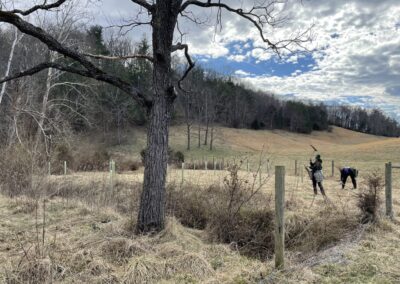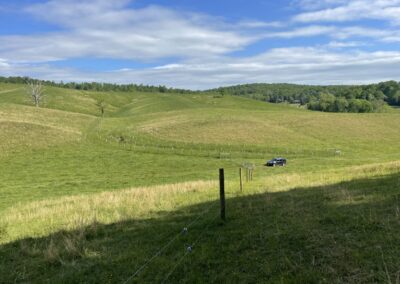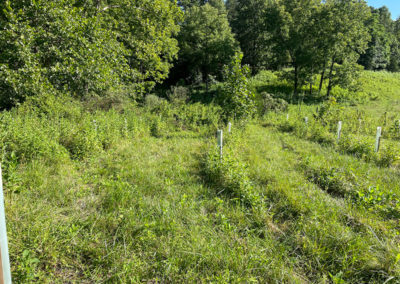Success Stories
Braford Farm
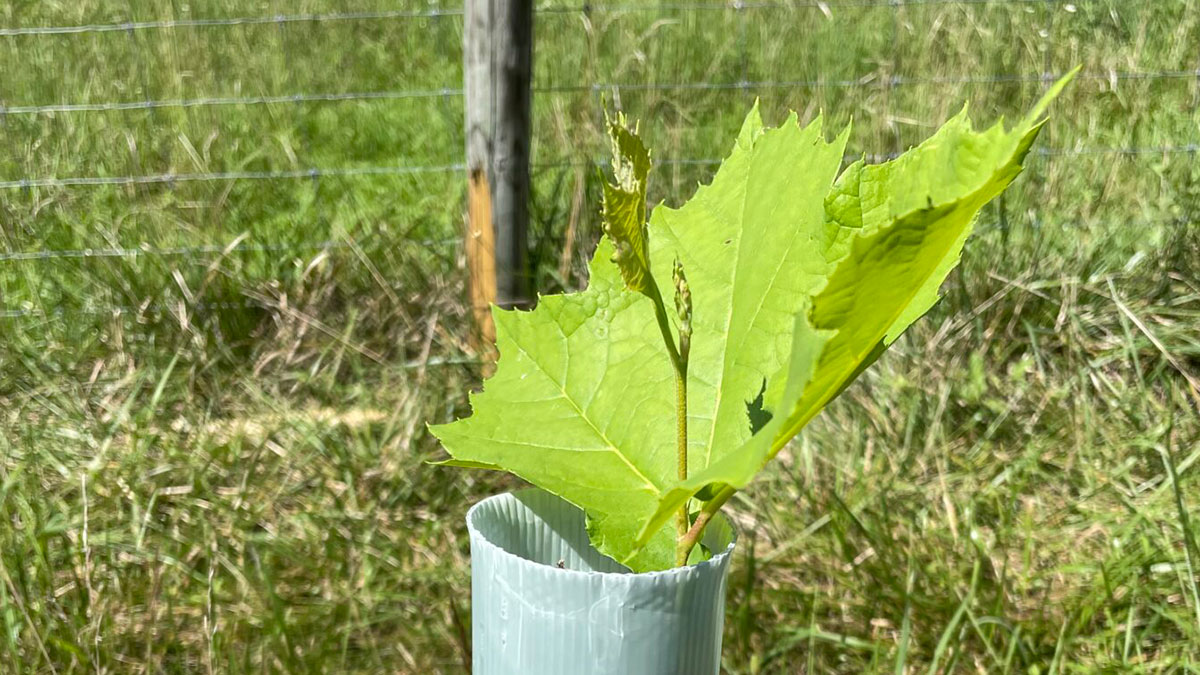
Sycamore sapling in a 2022 buffer planting at Braford Farm, Natural Bridge Station, VA
Problem:
Landowners wanted to build on early efforts to establish a buffer, and implement strategies to minimize damage from cattle.
Solution:
About 3 acres of new forested riparian buffer, assistance and cost-share to protect an eroded seep and to encourage rotational grazing, and followup maintenance.
Outcome:
Healthy tree seedlings are flourishing and will protect water quality in two tributaries that enter the James River just a half-mile downstream; and the cattle enjoy improved grazing.
Building on a good start
Landowners and cattle farmers Bill and Lea Braford rotationally graze a cow-calf herd on a 250-acre farm in Rockbridge County, Virginia. The Brafords had already fenced their cattle out of streams on the farm using state cost-share funding and had planted trees on their own, but wanted to create buffers in other areas.
During a field visit hosted the Upper and Middle James Riparian Consortium in April 2021, Chesapeake Bay Foundation (CBF) staff saw the farm as a great fit for the James River Buffer Program, which at that time had just expanded to the Upper James region. The program covers the full cost for landowners to install trees along rivers and streams in the James River watershed.
CBF staff worked with the Brafords to develop a plan for around three acres of new forested riparian buffers. They also offered technical assistance and cost-share for additional fencing to exclude cattle from an eroded seep in the middle of a field that was also planted with trees, and helped create additional paddocks to improve rotational grazing. In March 2022 hardwood species like black walnut, black willow, sycamore, river birch, tulip poplar, red maple, swamp white oak, and pin oak were planted in the buffers.
In addition to the site preparation and installation of forested buffers, the James River Buffer Program (funded 100% by the Virginia Environmental Endowment) also covers three years of establishment support, such as mowing and herbicide applications. When CBF staff returned to perform tree shelter maintenance and survival checks in August 2022, they found that 98% of the seedlings had survived and were thriving. These buffers will protect water quality in two tributaries that enter the James River just a half-mile downstream.
Thanks to the Chesapeake Bay Foundation and the Chesapeake Conservation Landscaping Council for text and photos
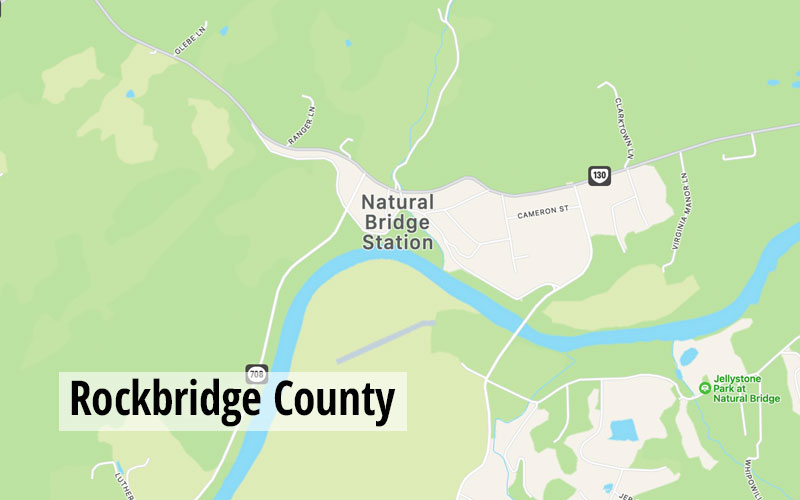
Landowners/producers Bill and Lea Braford rotationally graze a cow-calf herd on a 250-acre farm in Rockbridge County, Virginia.
About the Project
Location: Natural Bridge Station in Rockbridge County, Virginia
Year Installed: 2021 and ongoing
Land type: Agricultural
Acres of Riparian Forest Buffer: About 3 acres added
Trees planted: 500
Improvements: Riparian forest buffer restoration through planting and natural regeneration, cattle exclusion fencing, cattle paddock modification to enhance rotational grazing
Programs used: James River Buffer Program, Virginia Agricultural Cost Share Program
Key Partners: Chesapeake Bay Foundation, Natural Bridge Soil and Water Conservation District
Installed by: Chesapeake Bay Foundation staff

